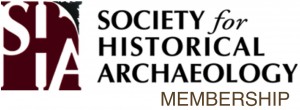Here’s the latest in our series of entertaining interviews with a diverse array of your fellow SHA members. Meet a member for the first time or learn something about a colleague that you never knew before. This blog series also offers current members an opportunity to share their thoughts on why SHA membership is important (Camaraderie? Professional service? Exchange of ideas in conference rooms and beyond? You tell us!). If you would like to be an interviewee, please email the Membership Committee Social Media Liaisons Eleanor Breen (eabreen@mountvernon.org) or Kim Pyszka (kmpyszka@aum.edu).
An Interview with Sarah Shaw (sarahshaw872@gmail.com), member of the Department of Anthropology at the Indiana University Bloomington. Holding a Master's degree in Anthropology, she possesses a profound understanding of historical and cultural preservation practices. Her academic achievements, coupled with her meticulous attention to detail and her ability to effectively manage complex projects, have opened doors to numerous opportunities. In her role, she takes charge of the supervision and coordination of archaeological research efforts, both within the university and in collaboration with external public and private clients. Her exceptional management skills have resulted in fruitful partnerships, rendering her an invaluable asset to both the department and the Society of Historical Archaeology (SHA).
At what point in your career did you first join the SHA?
I joined the Society of Historical Archaeology early in my career, shortly after completing my graduate studies and beginning my professional work as an archaeologist. I recognized the importance of being part of a community that shares my passion for historical archaeology and offers valuable resources for research, networking, and collaboration.
How many years have you been a member (approximately)?
I have been a member of the SHA for approximately 15 years now. My membership has been instrumental in staying updated on the latest research, connecting with fellow archaeologists, and contributing to the field through presentations and publications.
How has the SHA been beneficial to you and how do you feel connected to the community?
The publication of archaeological research in the discipline is essential and valuable. Unfortunately, the SHA has a limited number of publications and can only publish a small percentage of the research that is submitted. The question that I ask myself every year is whether or not the SHA has published enough archaeological research for my needs. If the answer is no, then I feel a responsibility to help the discipline by contributing to one of its other quality publications by submitting articles or by serving on a committee.
How has technology impacted the field of archaeology, and how do you incorporate these tools into your work?
Technology has significantly transformed archaeology. Remote sensing techniques, such as LiDAR and ground-penetrating radar, have allowed us to identify hidden archaeological features and landscapes that were previously challenging to detect. DNA analysis has also revolutionized our understanding of ancient populations and their migrations. In my work, I frequently use these technologies to locate potential excavation sites and gather more comprehensive data about the past.
Can you describe the process of dating and interpreting artifacts or archaeological layers, and how it contributes to our understanding of history?
Dating artifacts and archaeological layers is a critical aspect of our work. We use various dating methods, such as radiocarbon dating, luminescence dating, and dendrochronology, to determine the age of objects and layers. Interpreting these dates in the context of the site's history helps construct a chronological narrative. This chronological framework is essential for understanding how cultures evolved, how technology advanced, and how societies changed over time. It allows us to connect the dots and create a more comprehensive understanding of human history.
What are some of the biggest misconceptions or myths about archaeology that you'd like to debunk or clarify?
One common misconception is that archaeologists are like real-life Indiana Jones, constantly finding treasures and battling villains. In reality, much of our work involves meticulous excavation, analysis, and interpretation. Additionally, archaeology isn't just about objects; it's about understanding human history, which often involves piecing together fragments of the past rather than discovering grand treasures.
Archaeology often involves public outreach and education. How do you engage with the public to share the significance of your work and its impact on our understanding of the past?
Public outreach is a crucial aspect of our work. We engage with the public through lectures, workshops, and open excavations, allowing people to see the archaeological process firsthand. We also use various media, such as documentaries, social media, and museum exhibits, to share our findings and the significance of archaeology. By involving the public, we can foster a greater appreciation for the past and its relevance to the present.


